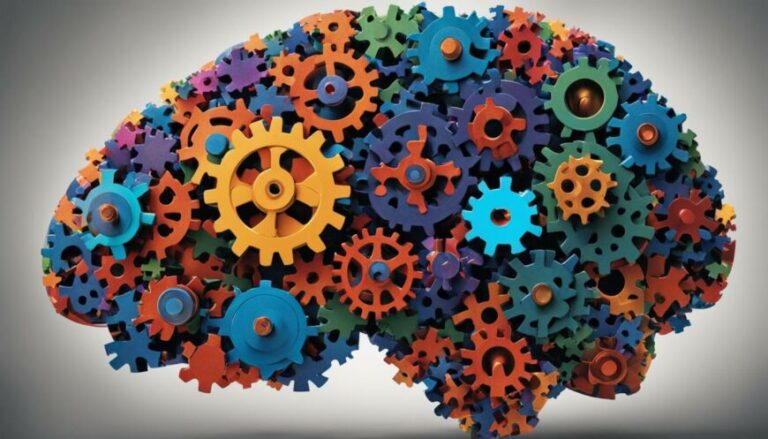Are you tired of traditional lectures and textbook-based learning? Do you want to develop your critical thinking skills and take ownership of your learning journey? If so, Problem-Based Learning (PBL) may be the solution you’ve been looking for. PBL is a student-centered approach to education that promotes active learning and encourages collaboration, inquiry, and problem-solving.
Key Takeaways:
- Problem-Based Learning is a student-centered approach to education
- PBL promotes active learning, collaboration, inquiry, and problem-solving
- PBL can enhance critical thinking skills and empower students to take ownership of their learning journey
- PBL involves designing meaningful and challenging problems for students to solve
- Assessing the outcomes of PBL requires a multifaceted approach
What is Problem-Based Learning?
If you’re tired of traditional lectures and textbook-based learning, Problem-Based Learning (PBL) is a powerful alternative. PBL is an instructional method that focuses on real-world problems or challenges to engage students in active inquiry and problem-solving. Instead of passive listening, PBL requires active participation and collaboration to find solutions.
Inquiry-based learning is at the heart of PBL. By posing relevant and complex problems, PBL encourages you to analyze and evaluate information, apply prior knowledge and skills, and seek out new knowledge to advance your understanding and find solutions. This process fosters critical thinking and problem-solving skills, which are highly valued in today’s rapidly changing world.
PBL’s collaborative learning environment allows you to work closely with peers, share ideas, and take ownership of your learning journey. This approach positions you as the key player in the learning process, with the teacher serving as a facilitator and guide. As a result, PBL promotes self-directed learning and empowers you to take responsibility for your own progress.
Key Benefits of Problem-Based Learning
Problem-Based Learning (PBL) offers numerous benefits for you as a learner. By engaging in active inquiry and collaborative problem-solving, you can develop essential critical thinking skills that are highly valued by employers and applicable in many areas of life.
One of the key benefits of PBL is that it fosters collaboration. Working together with your peers to develop solutions to real-world problems not only enhances your social skills, but also allows you to learn from different perspectives and approaches. Additionally, by tackling authentic problems, PBL helps you develop problem-solving skills that are applicable in real-life situations, allowing you to be better equipped to face challenges in your personal and professional life.
Critical thinking skills are also greatly enhanced through PBL. By requiring you to analyze and evaluate information to solve problems, PBL helps you develop a deeper understanding of the content. As you apply your knowledge to real-world problems, you are also more likely to remember and retain the information.
Overall, Problem-Based Learning provides a dynamic and engaging learning experience that can unlock your potential as a learner and prepare you for success in the real world. Embrace PBL to develop your critical thinking and collaborative skills today.
Implementing Problem-Based Learning in the Classroom
If you are considering implementing Problem-Based Learning (PBL) in your classroom, there are several key factors to consider. PBL involves designing meaningful and challenging problems for your students to solve, which requires careful planning and preparation. As the teacher, your role shifts to that of a facilitator rather than a traditional lecturer, guiding your students through the learning process and providing support and guidance along the way.
One way to implement PBL is to integrate it with project-based learning (PjBL), which allows your students to explore their interests and develop a deeper understanding of the content. This approach encourages students to take ownership of their learning journey and promotes intrinsic motivation.
When designing PBL activities, it’s important to keep in mind that they should be relevant and engaging for your students. You can start by brainstorming problems or challenges that are related to the subject matter you are teaching. For example, if you are teaching a science class, you might ask your students to investigate a local environmental issue and come up with solutions to address it.
Another key factor to consider is how you will assess your students’ learning outcomes. Traditional assessment methods like quizzes and exams may not be suitable for PBL, as they do not necessarily measure critical thinking skills or real-world application of knowledge. Instead, consider using alternative assessments such as presentations, projects, and reflective journals to evaluate your students’ understanding and problem-solving skills.
| Key Points for Implementing PBL: |
|---|
| Design meaningful and challenging problems |
| Integrate with project-based learning |
| Ensure relevance and engagement for your students |
| Assess using alternative methods |
Overall, implementing PBL in your classroom can be a rewarding and effective way to promote active learning, critical thinking skills, and collaboration among your students. By creating an environment where students can apply their knowledge to real-world problems, you can inspire a love of learning that will stay with them for a lifetime.
Examples of Problem-Based Learning Activities
Problem-Based Learning (PBL) is a student-centered approach to education that promotes active learning and critical thinking skills. By posing real-world problems, PBL encourages students to collaborate and apply their knowledge to find solutions. Here are some examples of PBL activities that can engage students in authentic, meaningful challenges:
Investigating a Local Environmental Issue
Students can research and identify an environmental issue in their local community, such as pollution, deforestation or climate change. They can then work collaboratively to develop possible solutions and present them to the class or school board.
Designing a Sustainable Solution to Societal Problems
Students can develop sustainable solutions that address societal problems such as homelessness, poverty or lack of access to education. This could involve designing a prototype, creating a business plan, and presenting their solution to a panel of experts.
Creating a Social Entrepreneurship Project
Students can explore social entrepreneurship by creating a business plan or designing a product that addresses a social issue. They can then pitch their idea to potential investors or present at a social enterprise conference.
These are just a few examples of Problem-Based Learning activities. The possibilities are endless, and the outcomes are often transformative. PBL promotes student-centered learning and helps students develop critical thinking, collaboration and problem-solving skills that are essential for success in the real world.
Assessing Problem-Based Learning Outcomes
Assessing the outcomes of Problem-Based Learning (PBL) can be challenging, as it requires a multifaceted approach. Traditional methods of assessment, such as exams and quizzes, may still be used, but PBL also calls for alternative assessments that provide a holistic view of students’ understanding, problem-solving skills, and ability to apply knowledge.
One effective method of assessment in PBL is presentations. Students can present their solutions to the problems posed, allowing them to demonstrate their critical thinking skills and ability to communicate their ideas effectively. Another alternative assessment is the use of projects, which can give students the opportunity to apply their knowledge to real-world issues. Additionally, reflective journals can provide insight into the student’s learning process, allowing teachers to gauge their growth and self-awareness.
When designing assessments for PBL, it is important to keep in mind the objectives of the learning experience. The assessments should align with the learning outcomes and provide opportunities for students to demonstrate their understanding and application of knowledge.
Case Studies: Success Stories of Problem-Based Learning
Problem-Based Learning has transformed classrooms and empowered students to take ownership of their learning. Let’s explore some case studies of institutions that have successfully implemented PBL.
Case Study 1: High Tech High, San Diego
High Tech High is a charter school that focuses on Project-Based Learning and Problem-Based Learning. The school’s curriculum is designed to provide students with a real-world education that prepares them for college and beyond.
At High Tech High, students engage in PBL activities that require them to solve complex problems while collaborating with their peers. For example, students in the Environmental Science class investigated the issue of plastic waste in their community. They researched the problem, analyzed data, and developed a plan to reduce plastic waste in their school and neighborhood.
The success of High Tech High’s PBL approach is evident in its graduation rates, which are significantly higher than the national average. The school’s alumni also report that they are well-prepared for college and careers.
Case Study 2: McMaster University, Canada
McMaster University is a public research university in Hamilton, Ontario that has implemented Problem-Based Learning across various disciplines. The university’s Health Sciences program, in particular, is known for its innovative PBL approach.
Using PBL, students in the Health Sciences program tackle real-world health problems and develop solutions in collaboration with their peers. For example, students in the Physical Therapy program worked together to develop a rehabilitation program for patients with Parkinson’s disease.
McMaster’s PBL approach has resulted in graduates who are well-equipped to apply their knowledge in real-life situations. Employers praise the university’s graduates for their critical thinking skills and ability to work collaboratively.
Case Study 3: Kaohsiung Medical University, Taiwan
Kaohsiung Medical University is a medical school in Taiwan that has adopted a Problem-Based Learning approach to education. The school’s PBL curriculum focuses on developing students’ critical thinking skills and ability to apply their knowledge to solve real-world medical problems.
Using PBL, students work in small groups to analyze patient case studies and develop diagnoses and treatment plans. The curriculum also incorporates simulation exercises to provide students with hands-on experience.
The success of Kaohsiung Medical University’s PBL approach is evident in its graduates, who are well-prepared to enter the medical profession. Students report that PBL has given them the skills and confidence to tackle complex medical problems.
These case studies demonstrate the power of Problem-Based Learning in promoting student-centered learning and empowering learners to reach their full potential. With PBL, students develop critical thinking skills, collaborate with peers, and apply their knowledge to solve real-world problems.
Conclusion
You now understand the power and benefits of Problem-Based Learning (PBL). This student-centered approach to education promotes active learning and critical thinking skills by engaging students in real-world problems or challenges. By collaborating and applying knowledge to find solutions, PBL empowers learners to take ownership of their learning journey.
Implementing PBL in the classroom involves designing meaningful and challenging problems for students to solve. Teachers act as facilitators, guiding students through the learning process and providing support as needed. PBL can be integrated into various subjects and can even overlap with project-based learning, allowing students to explore their interests and develop a deeper understanding of the content.
By embracing PBL, you can unlock your true potential as a learner. This approach enhances critical thinking skills and fosters collaboration, preparing you for success in real-life situations. Assessing the outcomes of PBL requires a multifaceted approach, including traditional methods like exams and quizzes as well as alternative assessments like presentations and projects.
Real-life case studies demonstrate the transformative power of PBL in educational settings. Schools and institutions have successfully implemented PBL, empowering students and fostering a love for learning. By embracing PBL, you can join the growing movement of educators and learners who are embracing active learning and critical thinking skills.







